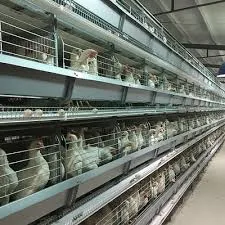Innovative Vertical Feed Mixers for Efficient Livestock Feeding Solutions
Nov . 06, 2024 03:37 Back to list
Innovative Vertical Feed Mixers for Efficient Livestock Feeding Solutions
The Benefits of Vertical Feed Mixers in Modern Agriculture
In the realm of modern agriculture, efficiency and precision are key to maintaining productivity and profitability. One of the essential tools that every livestock farmer should consider is the vertical feed mixer. These machines play a significant role in ration preparation, contributing to improved animal health and optimal feed utilization.
What is a Vertical Feed Mixer?
Vertical feed mixers are specialized machines designed to blend various ingredients into a uniform feed ration for livestock. Unlike horizontal mixers, which operate through a side-to-side motion, vertical mixers utilize a vertical auger system that helps mix feed thoroughly and evenly. This design allows for a more effective and efficient mixing process, ensuring that all components are well-integrated.
Key Features of Vertical Feed Mixers
1. Advanced Mixing Technology The vertical design effectively incorporates both heavy and light ingredients, leading to a homogenous mix. This technology ensures that every bite the animals take is nutritionally balanced, which is crucial for their overall health and productivity.
2. Versatility Vertical feed mixers are adaptable to various types of feed, including hay, silage, grains, and premixes. This versatility makes them suitable for a variety of livestock operations, from dairy farms to beef cattle ranches and even smaller operations with fewer animals.
3. Low Energy Consumption Compared to traditional horizontal mixers, vertical feed mixers are known for their energy efficiency. Their design requires less power to operate, which can lead to significant cost savings in the long run, especially for large-scale operations.
vertical feed mixers

4. Compact Size and Mobility Many vertical feed mixers are designed to be more compact and mobile than their horizontal counterparts. This feature is particularly beneficial for farmers who may have limited space or need to move the mixer between different locations on their farm.
Advantages of Using Vertical Feed Mixers
1. Improved Feed Consistency Consistency in feed is critical for livestock health. Vertical mixers provide a thorough blending process that minimizes the risk of sorting in the feed, ensuring that animals receive the proper nutrients with every serving.
2. Enhanced Nutrient Utilization A well-mixed diet leads to better nutrient absorption in animals. By utilizing vertical feed mixers, farmers can improve feed conversions, leading to healthier livestock and improved growth rates, ultimately enhancing productivity.
3. Reduced Labor Costs The automated features of modern vertical feed mixers reduce the manual effort required to prepare feed. This not only saves time but also allows farmworkers to focus on other essential tasks, improving overall operational efficiency.
4. Customizable Rations Farmers can easily adjust formulations to meet the specific dietary needs of their livestock. Whether it’s adjusting for different life stages, production goals, or seasonal changes, vertical feed mixers can accommodate these needs seamlessly.
Conclusion
In a rapidly evolving agricultural landscape, the integration of advanced machinery such as vertical feed mixers is becoming increasingly important. These mixers not only contribute to the quality of feed but also optimize the overall management of livestock operations. By enhancing feed consistency, increasing nutrient efficiency, and reducing labor costs, vertical feed mixers position farmers for success in a competitive market. Investing in this technology can yield both short-term and long-term benefits, promoting healthier animals and more sustainable farming practices. As farmers continue to seek innovative solutions to meet growing challenges, vertical feed mixers are likely to become an indispensable component of modern livestock operations.
-
Automatic Feeding Line System - Anping Yize|Poultry Efficiency&Durability
NewsJul.29,2025
-
Automatic Feeding Line System-Anping County Yize Metal Products Co., Ltd.|Durable PP Material&Easy Maintenance
NewsJul.29,2025
-
Automatic Feeding Line System-Pan Feeder Nipple Drinker|Anping County Yize Metal Products Co., Ltd.
NewsJul.29,2025
-
Hot Sale 24 & 18 Door Rabbit Cages - Premium Breeding Solutions
NewsJul.25,2025
-
Automatic Feeding Line System Pan Feeder Nipple Drinker - Anping County Yize Metal Products Co., Ltd.
NewsJul.21,2025
-
Automatic Feeding Line System Pan Feeder Nipple Drinker - Anping County Yize Metal Products Co., Ltd.
NewsJul.21,2025






